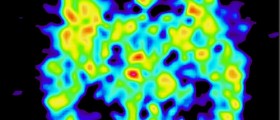
People who suffer from brain injuries are quite susceptible to cerebral edema. This condition leads to majority of deaths, when it comes to this condition. In fact, cerebral edema can be deadly since it triggers cerebral ischemia resulting in cutting of the blood supply to certain areas of the brain. The pressure which is created due to this condition may easily damage the brain by compressing its structures.
Facts about Cerebral Edema
When doctors are dealing with this condition, their primary concern is maintaining proper global cerebral blood flow, preventing secondary neural injury from taking place. The treatment may involve simple steps like aligning the body and the head of the patient adequately, thus providing proper blood flow, preventing dehydration and systemic hypotention as well as maintaining normothermia. However, more complex procedures may involve controlling hyperventilation, treating the condition with corticosteroids and diuretics as well as osmotherapy and various other treatments by medications.
The Condition, the Treatment
As it was mentioned above, cerebral edema is a condition affecting the brain. Basically, it is nothing more than an increase in water levels in the area, exceeding 80%, which is considered to be optimal. This imbalance results in numerous health issues, some of which can easily be fatal.
There are three major subclasses of cerebral edema. Cytotoxic, vasogenic and interstitial are the three possible types. Sometimes, these subtypes may appear to be combined, depending on the cause or the type of the injury in question. However, cytotoxic edema takes place when neurons, glia and endothelial cells swell due to energy failure and substrate. Due to these factors, the gray area of the brain gets affected negatively, as well as the white matter. This variant of cerebral edema is known to be impossible to treat so far.
AS for the vasogenic cerebral edema, it happens once BBB breakdown takes place because of vascular permeability. Thus, this subtype is common in patients suffering from TBI, neoplasms and some kinds of inflammations. Here, white matter is mostly affected. Steroid therapy and osmotherapy are both suitable treatments for this variant.
Finally, interstitial cerebral edema appears after an unsuccessful absorption of CSF, leading to acute hydrocephalus. It cannot be treated by steroids and osmotherapy has only been successful in a limited number of cases.
When a brain injury takes place, it usually results in a focal cerebral edema, which later evolves into the above mentioned subtypes. Regardless, cerebral edema is a condition which is best to be treated timely, through early diagnosis and adequate therapy.

















Your thoughts on this
Loading...